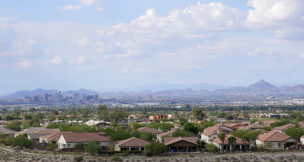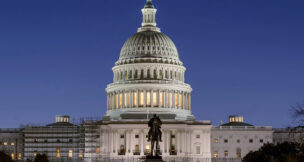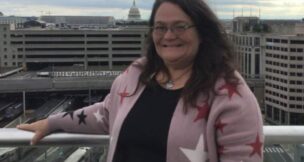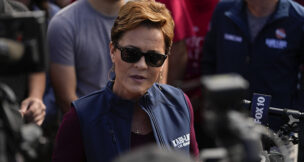Report: Slack revenues drive transit fares higher and riders away
Arizona Capitol Reports Staff//March 20, 2009//[read_meter]
Report: Slack revenues drive transit fares higher and riders away
Arizona Capitol Reports Staff//March 20, 2009//[read_meter]
As Valley Metro prepares to raise bus and light-rail fares, a public interest group reports such increases could push more riders back into automobiles — at a cost to the environment.
More drivers means more traffic congestion, more sprawl and more pollution, according to a report released in March by the Arizona Public Interest Research Group Education Fund.
The Education Fund is an independent arm of Arizona PIRG, a consumer advocacy group.
“The Valley Metro fare hike expected this summer is something of the opposite of what we need right now,” said Alex Nelson, PIRG transportation associate.
The proposed increase comes at a time when more people are turning to public transportation because of a weak economy, he said.
“Public transportation is just a really great solution for folks who want to save money,” Nelson said.
Ridership on Valley Metro increased by 6 percent in 2008, Nelson said.
“That’s faster than population growth,” he added.
But Nelson said he understands that Valley Metro has been squeezed as well. Revenues have taken a hit, largely because of a decline in a primary funding source — sales taxes. That includes 2004’s Prop. 400, a Maricopa County half-cent sales tax for freeways and transit. Phoenix transit — which operates under the Valley Metro umbrella — gets funding from a separate dedicated sales tax.
A Valley Metro spokeswoman said the proposed fare increase would reduce ridership by less than 1 percent. This was determined by a formula used by planners.
“We don’t anticipate we would see a significant decrease in ridership,” Susan Tierney of Valley Metro said.
The basic fare increase would be 50 cents — to $1.75 from $1.50 for one trip on a local bus or the light rail. Valley Metro does not permit transfers, so switching to a second bus would mean a new fare.
A larger increase would come in the one-day pass on local buses, including light rail — to $5.25 from $2.50.
But Tierney points out that the new one-day fare would be charged only to riders who buy the pass on the bus. It would cost $3.50 if bought at an off-bus site, she said.
This is a cost-cutting measure for Valley Metro, Tierney said.
“Pushing money into a fare box slows the bus down,” she said. “It costs us more to operate and we’re not as efficient.”
The lower-fare pass will be available at some 80 outlets in Maricopa County, including transit centers, libraries, Phoenix City Hall and Fry’s and Food City grocery stores. Passes can also be purchased at light-rail kiosks. Valley Metro plans to add more outlets, Tierney said. Tickets can be purchased online as well.
“Our intent is not to make this difficult for transit-dependent riders,” she said. “We want them to have as much access to purchasing fares off-board as everyone else.”
The express commuter bus fare for one ride would go to $2.75 from $1.75 and — for the one-day pass — to $7.25 from $3.50. One-day passes purchased off-board would be $5.50.
The fares are set by the 15-member Valley Metro board, made up of elected officials from Valley cities and Maricopa County. The board approved the proposed July 1 increases in a March 19 meeting.
The board requires fares to make up 25 percent of Valley Metro’s operating cost. As the sales tax declines, the fares need to hold their own, Tierney said.
“We’ve gone through our reserves. The fares are needed to maintain that 25 percent coverage,” she said.
Before 2007, the last fare increase was in 1994, she said.
Bus service has already been reduced — at least within the city of Phoenix, Tierney said. The city has cut routes, hours and the number of buses.
The City Council must vote on any fare increases inside Phoenix.
The PIRG report says fares should not be set to cover percentage of costs. Instead, transportations officials should set them at a rate that doesn’t discourage ridership, according to the report.
It adds that gas-taxes and other auto-based revenues should help finance public transportation. Nelson acknowledges that the Arizona Constitution bars using state gas taxes for anything but roads and freeways.
But as it’s currently structured, he said, the gas tax “doesn’t cover the whole cost of driving,” he said. “The emissions that come from your car are actually hurting citizens at large. Kids develop asthma because of poor air quality.”











